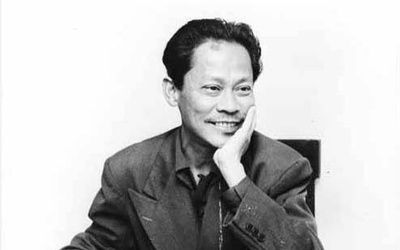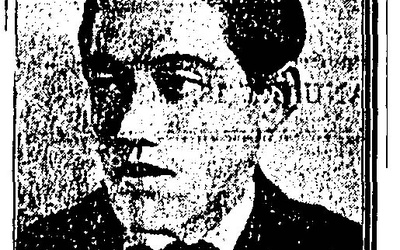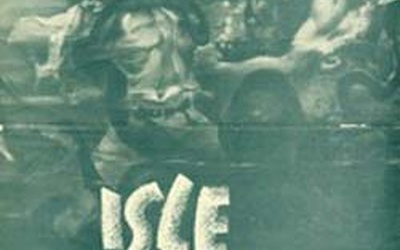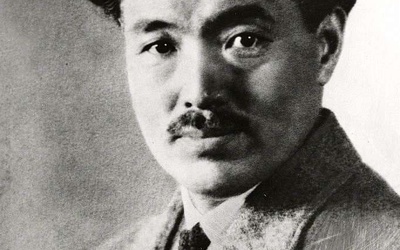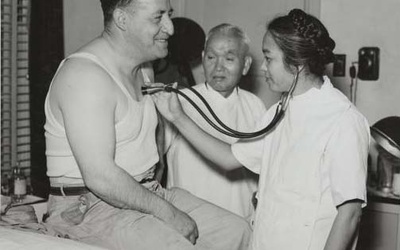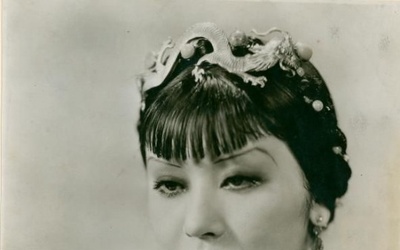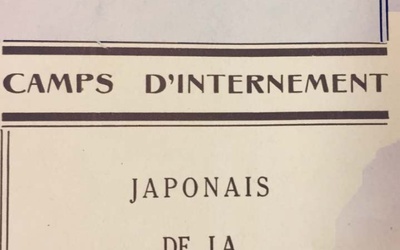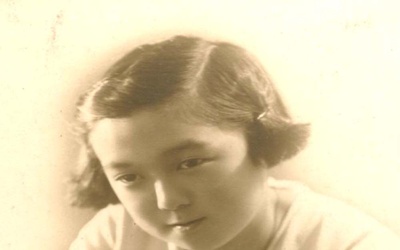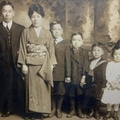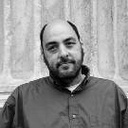
Greg Robinson
@GregGreg Robinson, a native New Yorker, is Professor of History at l'Université du Québec À Montréal, a French-language institution in Montreal, Canada. He is the author of the books By Order of the President: FDR and the Internment of Japanese Americans (Harvard University Press, 2001), A Tragedy of Democracy; Japanese Confinement in North America (Columbia University Press, 2009), After Camp: Portraits in Postwar Japanese Life and Politics (University of California Press, 2012), Pacific Citizens: Larry and Guyo Tajiri and Japanese American Journalism in the World War II Era (University of Illinois Press, 2012), and The Great Unknown: Japanese American Sketches (University Press of Colorado, 2016), as well as coeditor of the anthology Miné Okubo: Following Her Own Road (University of Washington Press, 2008). Robinson is also coeditor of the volume John Okada - The Life & Rediscovered Work of the Author of No-No Boy (University of Washington Press, 2018).
His historical column “The Great Unknown and the Unknown Great,” is a well-known feature of the Nichi Bei Weekly newspaper. Robinson’s latest book is an anthology of his Nichi Bei columns and stories published on Discover Nikkei, The Unsung Great: Portraits of Extraordinary Japanese Americans (University of Washington Press, 2020). It was recognized with an Association for Asian American Studies Book Award for Outstanding Achievement in History Honorable Mention in 2022. He can be reached at robinson.greg@uqam.ca.
Updated March 2022
Stories from This Author
A Heart to Heart: Carlos Bulosan and Japanese Americans - Part 1
Sept. 22, 2022 • Jonathan van Harmelen , Greg Robinson
One of the first and most gifted writers to express an Asian American consciousness was Carlos Bulosan. Bulosan’s experience as a migrant laborer from the Philippines to the U.S. and his travels along the California coast during the era of the Great Depression inspired his work, most notably his autobiographical novel America is in the Heart (1946). The novel introduced the experience of Filipino migrants to American audiences. Bulosan’s incisive portraits of migrant farmworkers provided one of the first accounts …
Yoshinori Matsuyama: A Transnational Japanese Tenor and Composer in America—Part 2
Sept. 6, 2022 • Greg Robinson
Read Part 1 >> In January 1925, Comoedia magazine reported that Yoshinori Matsuyama would be leaving France and returning to his native country for an extended period to research “characteristic scenes of ancient Japan” for future presentation in France by a new company of singers, dancers, instrumentalists, and mimes, as well as to present French works to Japanese audiences. The critic noted: “Mr. Matsuyama has written works whose harmonies are entirely based on the koto scale, whereas the modern Japanese …
Yoshinori Matsuyama: A Transnational Japanese Tenor and Composer in America—Part 1
Sept. 5, 2022 • Greg Robinson
In recent decades, Asian-born performers have occupied a visible place in western classical music. These Musicians From a Different Shore, in scholar Mari Yoshihara’s phrase, have included renowned soloists such as Yo-Yo Ma, Mitsuko Uchida, Cho-Liang Lin, Midori, Kyung-Wah Chung, and Lang Lang, conductors such as Seiji Ozawa and Myung-whun Chung, as well as countless top-flight ensemble players. In contrast, the presence and contribution of Asian classical music performers in the period before World War II has remained surprisingly obscure. …
Tetsu Komai: The Story of The Man You Love to Hate
Aug. 22, 2022 • Greg Robinson
One of the most prolific, and possibly most underappreciated, Asian American actors of the “Golden Age of Hollywood” was Tetsu Komai, who distinguished himself by playing villainous “Asiatics” (mostly Chinese) for the delectation of American audiences. He acted in over 60 features in the prewar decades, appearing opposite such great names as Humphrey Bogart, Ronald Colman, and Bette Davis, as well as Anna May Wong. Tetsuo Komai was born 23 April 1894 in Kumamoto, Japan. His father was Takekuma Komai, …
When Danger Flew East: The Career of Miki Morita
July 22, 2022 • Greg Robinson
One of the most fascinating, and most poignant, stories of Nikkei performers in the “golden age” of Hollywood is that of Miki Morita (AKA Mike Morita). While he never achieved the stardom of Sessue Hayakawa, he appeared in some 50 films in 1930s Hollywood. He also distinguished himself by his campaign against hostile stereotyping. Information on Morita’s early life is sparse and unverified. He was born Mitsugi Morita in Nagano, Japan on September 1, 1888, the son of Shinzaburo Morita. …
The Ichioka Women - Part 2: Achievement and Conflict
July 8, 2022 • Greg Robinson
Read Part 1 >> Toshia Mori was not the only performer from the Ichioka clan, nor the only family member to win renown. First, sister Mia was able to build her own film career outside Toshia’s shadow. Mizuye “Mia” Ichioka was born in Japan on Jan 28, 1916, and arrived in the United States as a small child. In the early 1930s, Mia studied at Los Angeles’s Poly High School, graduating in 1933. Mia’s first film role (nilled as Media Ichioka) …
The Ichioka Women - Part 1: The Story of Toshia Mori
July 7, 2022 • Greg Robinson
In the 1930s, the women of the Ichioka family in Los Angeles excelled in multiple walks of life, including medicine and the performing arts. The brightest light among them was Toshia Mori, who became one of the first Japanese Americans to shine in Hollywood during the sound era. Sadly, the family’s relations degenerated into divisions and ultimately protracted legal conflict. The head of the family was the physician and surgeon Dr. Toshio Ichioka. Born Toshio Sato in Hiroshima, Japan on …
Japanese Canadians: Race, Religion, and Confinement
June 22, 2022 • Greg Robinson
The current exhibition at the Japanese American National Museum, entitled Sutra and Bible: Faith and the Japanese American World War II Incarceration, centers on the role of religion in the wartime Japanese American experience. It follows on the work of scholars such as Duncan Ryuken Williams, Anne Blankenship, and Beth Hessel, who have shed light on such topics as religious workers in camp and religious affiliation as a means of community formation. In fact, religion also played an important and largely …
The Kai family: A Transnational Nisei Story - Part 2
June 2, 2022 • Greg Robinson
Read Part 1 >> An intriguing pendant to the life of Yoshio Kai is the story of his sister Miwa, six years his junior. Born in San Francisco in 1913, she moved to Japan with the Kai family, as mentioned. However, perhaps because of the damage done by the 1923 earthquake, Miya was desperate to leave her new Japanese home. Though she was only 11, she was able to secure her return from Japan to the United States, in the …
The Kai family: A Transnational Nisei Story - Part 1
June 1, 2022 • Greg Robinson
Two Nisei whose lives and career paths were strikingly uncommon were the siblings Miwa and Yoshio Kai. Miwa was a musical prodigy who starred as a classical pianist on the international stage in the years before World War II, then devoted herself afterwards to work as a skilled librarian—all of which no doubt included calling for quiet! Yoshio’s career was less spectacular than his sister’s, but he amassed a record of quiet heroism while in Asia during World War II, …

